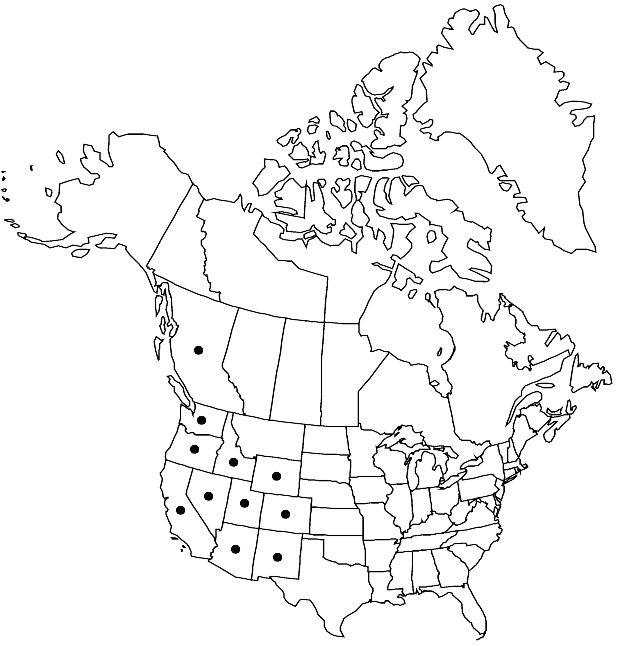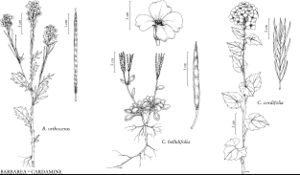Cardamine cordifolia
Mem. Amer. Acad. Arts, n. s., 4: 8. 1849.
Perennials; glabrous or densely puberulent. Rhizomes cylindrical, slender or stout, 1.5–3 mm diam., (not fleshy). Stems erect, unbranched or branched distally, 2–7 (–10.2) dm, glabrous or sparsely to densely puberulent basally or throughout. Rhizomal leaves usually absent, rarely present, simple, 5–15 cm; petiole 2.5–12 cm; blade reniform to cordate, 1.5–4.5 (–6) cm. Cauline leaves (3–) 5–17 (–23), simple or, rarely, proximalmost 3-foliolate, petiolate; petiole 1–6.5 (–8.5) cm, base not auriculate; blade reniform, deltate-cordate, or ovate-cordate, (1–) 2–7.2 (–9.7) cm × 10–55 (–85) mm, (somewhat fleshy), base cordate or truncate, margins crenate to slightly sinuate, (veins ending in apiculae, surfaces glabrous or sparsely to densely pubescent). Racemes ebracteate. Fruiting pedicels divaricate to ascending, (7–) 10–20 mm. Flowers: sepals oblong, 2.5–4.5 × 1.5–2 mm, lateral pair slightly saccate basally; petals white, broadly obovate, 7–12 × 4–6 mm (claw to 6 mm, apex rounded to subtruncate or emarginate); filaments: median pairs 3.5–5 mm, lateral pair 2–3.5 mm; anthers oblong, 1–1.5 mm. Fruits linear, (2–) 2.5–3.7 (–4) cm × 1.2–2 mm; (valves glabrous or sparsely puberulent); ovules 14–24 per ovary; style 0.5–3 (–6) mm. Seeds brown, oblong, 1.6–2 × 1–1.3 mm. 2n = 24.
Phenology: Flowering May–Aug.
Habitat: Stream banks, springs, shady gullies, creek bottoms, lakeshores, ponds, cold springs, meadows, moist hillsides, mossy areas, alpine streams, mixed coniferous forests
Elevation: 600-3600 m
Distribution

B.C., Ariz., Calif., Colo., Idaho, Nev., N.Mex., Oreg., Utah, Wash., Wyo.
Discussion
Cardamine cordifolia is highly variable in leaf morphology, especially in leaf width, depth of the cordate base, and indumentum. This variation occurs throughout the species range and is rather weakly or not at all correlated with geography. In the absence of a detailed biosystematic study over the entire species range, we follow N. H. Holmgren (2005b) in not recognizing any infraspecific taxa, instead of accepting the three rather poorly defined varieties recognized by R. C. Rollins (1993).
Selected References
None.
Lower Taxa
"equal" is not a number."elongated" is not a number."thick" is not a number."dm" is not declared as a valid unit of measurement for this property."dm" is not declared as a valid unit of measurement for this property.
